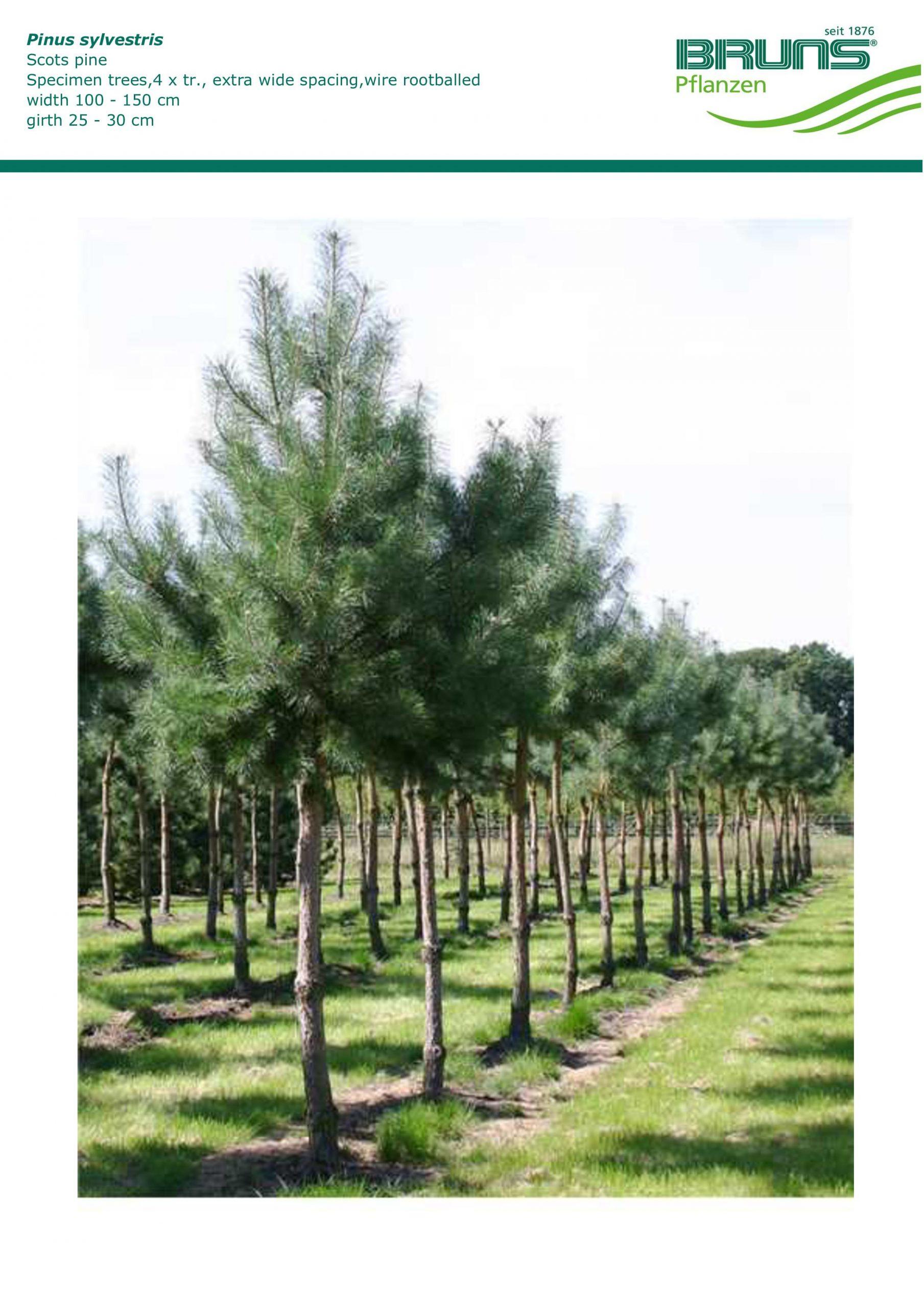Description
General information
Pinus sylvestris
Scots pine
Distribution
Europe to East Asia. P. sylvestris has the largest area of distribution of all our native trees. From the lowlands to the Alps to an altitude of 1600 m. Only colonises sites not favoured by deciduous trees: dunes, moors, rocks and scree.
Habit
Tall tree, when young open and conical, in maturity often with a one-sided, broadly umbrella-shaped crown and generally with a straight, long stem.
Size
Height 10m-30m (40m), Spread 7m-10m (15m)
Bark
Bark in the upper crown and stem is a splendid russet red, flaking in thin sheets: a characteristic of P. sylvestris. Old stems have brown-red to black, furrowed, scaly bark.
Needles
Evergreen, in pairs, generally slightly twisted, 4 to 7 cm long, blue-green or grey-green.
Cones
Cones are ovate-conical, 2.5 to 7 cm long, 2 to 3.5 cm wide, grey-brown.
Roots
On clay soils with a high ground-water table, or on peaty or stony soils, with a shallow root-system; otherwise a tap root is grown.
Site
Sun (withstands some shade on favorable soils).
Soil
Very undemanding as to site and water supply: grows on the poorest sandy soils and colonizes even acid highland moors. Fails on humus-free, open white sands (EHLERS). Otherwise on all dry to wet, acid to alkaline soils. Best on deep, moist, acid soils.
Characteristics
Extremely frost tolerant, withstands early and late frost, heat and drought, wind and urban site conditions. Intolerant of road salts and atmospheric pollution, may reach the age of 500 years, important provider of resin, needle litter is nutrient-poor and has a pH-value of 3.0 to 4.5 (EHLERS).
Utilisations
Solitary, topiary, public parks.








Reviews
There are no reviews yet.